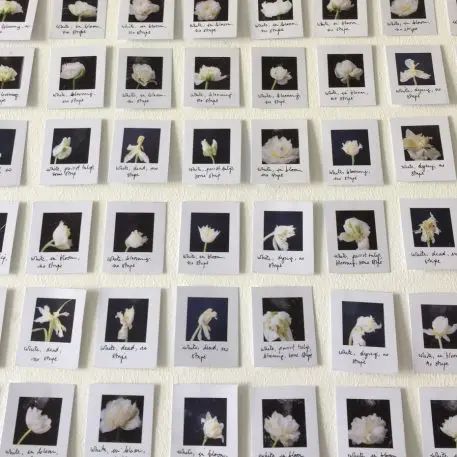In 2013, a prominent Dutch banking executive made international news by describing bitcoin as a bubble. “This is worse than the tulip mania,” he said at the time. “At least then you got a tulip [at the end], now you get nothing.”
Tulip mania was the 17th-century phenomenon that saw tulip prices skyrocket and collapse, driven in part by demand for tulip bulbs affected by a virus, known as Mosaic, that gave the blooms distinctive stripes. Without a clear understanding of how the virus affected tulip bulbs, the virus helped drive speculative buying and selling of the bulbs, which, legend has it, could be sold for the cost of a house. Whether or not tulip mania was truly a “mania” is still hotly debated by scholars, but it’s often held up as an example of an early speculative bubble–hence the recent comparisons to the cryptocurrency boom. Obviously there are major differences between these two complex economic systems, but both are often depicted by historians and bankers alike as an unstable frenzy, doomed from the beginning.
The virus that stoked that 17th-century mania serves as the eponymous title of an artwork by the artist Anna Ridler. The piece, Mosaic Virus, was commissioned by Impakt Festival and is still a work in progress; a video of it shows a rash of pinkish tulip blooms waxing and waning in uncanny striped patterns. Those stripes visualize the price of bitcoin between July and December in 2017, as though the flowers were evolving with stranger and stranger patterns as bitcoin prices fluctuated. Ridler calls it a “Dutch still life for the 21st century,” depicting nature through wildly artificial means.
“By making the price of bitcoin my ‘mosaic virus,’ that which controls the amount of stripe visible in the image of the tulip, I draw together ideas around capitalism, value, and the tangible and intangible nature of speculation and collapse from two very different yet surprisingly similar moments in history,” she explains in a statement.
Ridler’s tulips are anything but natural. They’re the result of a machine learning algorithm that the artist trained with 10,000 images of tulips–each of which she collected, photographed, and categorized over the course of one tulip season in the Netherlands to create a kind of small-batch, self-generated training data set. Labeling each photo by hand, she categorized the stage of life each tulip showed–was it a bud, or was it beginning to wilt?–along with details such as color. The result is a handcrafted data set that has its own title as an independent piece of art: Myriad.
“For me it becomes the decisive creative act,” Ridler writes, underlining “the humanness that is behind every algorithm, every decision made by an AI.”

To generate new flowers based on bitcoin’s price, Ridler trained a generative adversarial network, or GAN, using her painstakingly constructed data set. The result is an endless parade of tulips that look almost real–another similarity to Dutch still life, which often depicted what she calls “botanical impossibilities,” or groups of flowers that don’t bloom in the same season. Some of the tulips her AI dreams up look passably realistic, others explode into alien flowers in the hands of the algorithm. “GANs in particular have a tendency to seem like they are improving and then suffer ‘mode collapse,’ just like markets do,” she explains.
Ridler plans to continue developing Mosaic into a real-time visualization of bitcoin prices–a strangely beautiful warning that systems we don’t fully understand can bloom and wilt right before our eyes.
Recognize your company's culture of innovation by applying to this year's Best Workplaces for Innovators Awards before the extended deadline, April 12.